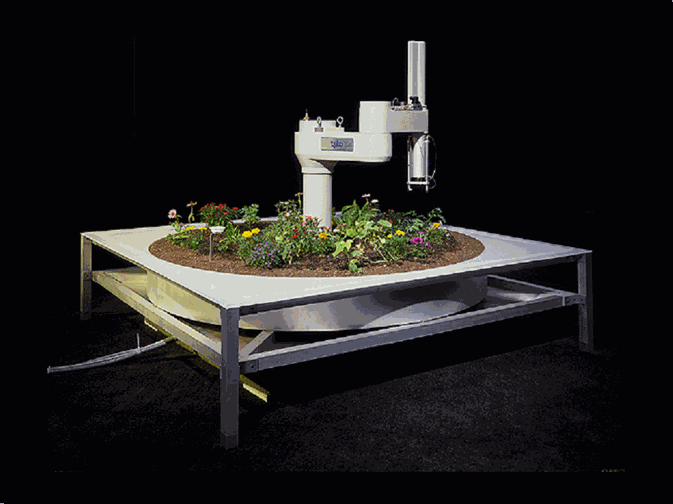Industrial robots (IRs) are expensive, closed, proprietary machines. Traditionally, these specialized CNC machines were limited to industrial & manufacturing applications. They are extremely useful in scenarios where it is safer, cheaper, faster, or more efficient to use a robot instead of a human: not only can IRs lift heavy equipment, handle dangerous materials, and move with extreme precision at rapid speeds, they can also work 24/7 with minimal maintenance.
The impact of industrial automation has been felt in the US workforce for nearly half a century. In 1972, UNIMATE, the first industrial robot, joined the General Motors assembly line to automate dangerous processes in die-casting. Although mechanized manufacturing had been around for over 200 years, the integration of UNIMATE marked the first time a robot –a programmable arm – shared the same workspace as a person. Rather than augmenting or streamlining human labor, it replaced us. UNIMATE signaled the larger cultural implications for the future of robotics: robotics would no longer be a subject science fiction or laboratory research; it would be an everyday reality of the workplace.
George Devol's UNIMATE: early generation arm in 1961 (left) and the robotic workforce on GM's assembly line in 1972 (right).
The past decade has seen dramatic job displacement in the global manufacturing workforce. Industrialized nations are incorporating industrial robots at much higher rates than human counterparts (see bottom-left figure.) Moreover, experts are anticipating that these job displacement trends are transferring to workforces outside of manufacturing. A 2014 Pew Research Center Report – AI, Robotics, and the Future of Jobs – surveyed nearly 2,000 experts on the near-future impact of robotic advances and AI on the global workforce. The three overarching concerns from respondents were:
- Impacts from automation have thus far impacted mostly blue-collar employment; the coming wave of innovation threatens to upend white-collar work as well.
- Certain highly-skilled workers will succeed wildly in this new environment—but far more may be displaced into lower paying service industry jobs at best, or permanent unemployment at worst.
- Our educational system is not adequately preparing us for work of the future, and our political and economic institutions are poorly equipped to handle these hard choices.
CHANGING THE STATUS QUO
While the momentum pushing us towards an automated workforce seems daunting, now is the time to reframe the existing relationships between people and industrial robots. The current model within industrial manufacturing places IRs as adversaries – "they are coming for our jobs" as described by Wired, Scientific American, MIT Technology Review, and countless other technology magazines. However, adapting IRs for uses outside of manufacturing domains can change industrial robots from adversaries into collaborators. Instead of developing ways for IRs to replace human labor, a collaborative model can create ways for IRs to augment, amplify, and extend human capabilities and creativity.
Existing creative applications of industrial robots tend to fall into three categories: fabrication, hybrid art, and interaction & telepresence. Below are brief descriptions of each, and a few notable example projects.
Fabrication
Industrial Robots are used to revive high-skill crafts that have been supplanted by industrial manufacturing and mass production processes: for example, carpentry, masonry, or plastering.
HYBRID ART
Industrial robots are used in combination with traditional artistic practices: for example drawing, sculpting, painting, or performance.
INTERACTION & TELEPRESENCE
Industrial robots are used used to intervene in social settings or as a physical proxy for remote users.









